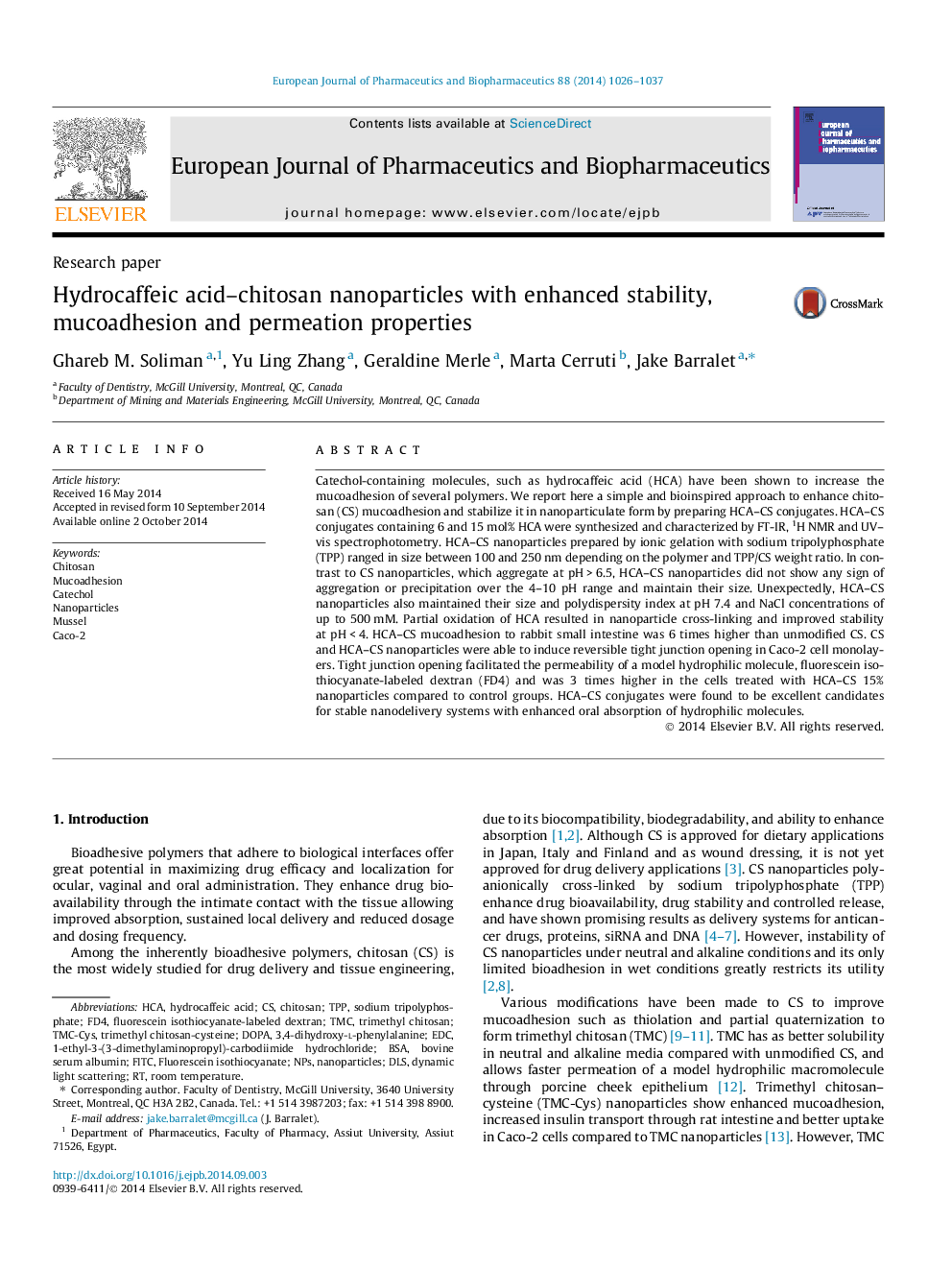| کد مقاله | کد نشریه | سال انتشار | مقاله انگلیسی | نسخه تمام متن |
|---|---|---|---|---|
| 2083540 | 1545337 | 2014 | 12 صفحه PDF | دانلود رایگان |
• Catechol–chitosan nanoparticles were stable against change in pH over the range 2–10.
• Catechol–chitosan nanoparticles enhanced mucoadhesion to rabbit intestine 6 fold.
• They were non-toxic and reversibly opened Caco-2 monolayer tight junctions.
• They enhanced the permeability of a model hydrophilic molecule by 200%.
Catechol-containing molecules, such as hydrocaffeic acid (HCA) have been shown to increase the mucoadhesion of several polymers. We report here a simple and bioinspired approach to enhance chitosan (CS) mucoadhesion and stabilize it in nanoparticulate form by preparing HCA–CS conjugates. HCA–CS conjugates containing 6 and 15 mol% HCA were synthesized and characterized by FT-IR, 1H NMR and UV–vis spectrophotometry. HCA–CS nanoparticles prepared by ionic gelation with sodium tripolyphosphate (TPP) ranged in size between 100 and 250 nm depending on the polymer and TPP/CS weight ratio. In contrast to CS nanoparticles, which aggregate at pH > 6.5, HCA–CS nanoparticles did not show any sign of aggregation or precipitation over the 4–10 pH range and maintain their size. Unexpectedly, HCA–CS nanoparticles also maintained their size and polydispersity index at pH 7.4 and NaCl concentrations of up to 500 mM. Partial oxidation of HCA resulted in nanoparticle cross-linking and improved stability at pH < 4. HCA–CS mucoadhesion to rabbit small intestine was 6 times higher than unmodified CS. CS and HCA–CS nanoparticles were able to induce reversible tight junction opening in Caco-2 cell monolayers. Tight junction opening facilitated the permeability of a model hydrophilic molecule, fluorescein isothiocyanate-labeled dextran (FD4) and was 3 times higher in the cells treated with HCA–CS 15% nanoparticles compared to control groups. HCA–CS conjugates were found to be excellent candidates for stable nanodelivery systems with enhanced oral absorption of hydrophilic molecules.
Figure optionsDownload high-quality image (67 K)Download as PowerPoint slide
Journal: European Journal of Pharmaceutics and Biopharmaceutics - Volume 88, Issue 3, November 2014, Pages 1026–1037
